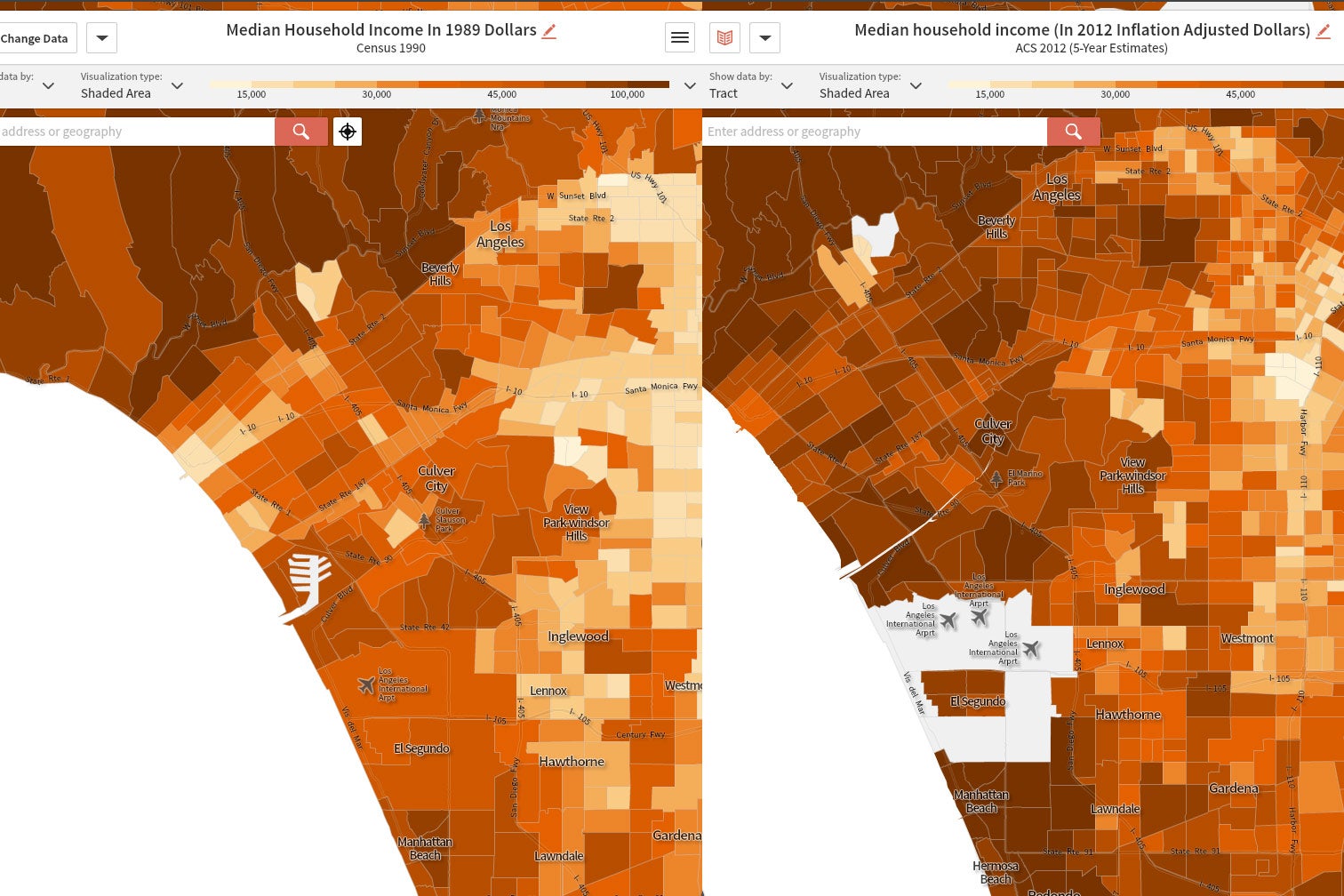
Families with children who have high earnings are moving into affluent neighborhoods for their school options. (Photo/Rich Legg/istock)
Neighborhood segregation is driven by income inequality, choice of school districts
The districts are a key factor for families with children, USC sociologist finds

Neighborhoods are becoming less diverse and more segregated by income — but only among families with children, a new study has found.
Study author Ann Owens, an assistant professor of sociology at the USC Dornsife College of Letters, Arts and Sciences, examined census data from 100 major U.S. metropolitan areas from Los Angeles to Boston. She found that, among families with children, neighborhood segregation is driven by increased income inequality in combination with a previously overlooked factor: school district options.
For families with high income, school districts are a top consideration when deciding where they will live, Owens said. And for those in large cities, the families have multiple school districts where they could choose to buy homes.
Income segregation between neighborhoods rose 20 percent from 1990 to 2010, and between neighborhoods it was nearly twice as high among households that have children compared to those without.
For childless families, schools are not a priority for selecting a home, which, Owens said, likely explains the reason they did not see a rise in the income gap or in neighborhood segregation.
“Income inequality has an effect only half as large among childless folks,” said Owens, whose study was published in the journal American Sociological Review. “This implies that parents who have children see extra money as a chance to buy a home in a good neighborhood so that their kids may attend a good school.”
A troubling sign
She said the increased neighborhood income segregation that her study uncovered is a troubling sign for low-income families. Studies have shown that integrated learning environments are beneficial for children of disadvantaged households and do no harm to children whose families have higher incomes.
Neighborhood and school poverty are big drivers of low-income kids’ poor educational outcomes.
Ann Owens
“The growing income gap and increased economic segregation may lead to inequalities in children’s test scores, educational attainment and well-being,” Owens said. “Neighborhood and school poverty are big drivers of low-income kids’ poor educational outcomes, so rising income segregation perpetuates inequality and may reduce poor kids’ mobility.”
Since the No Child Left Behind Act went into effect in 2002, more data than ever have been made available on schools, the quality of their teachers and their student achievement. It has given rise to a sense of competition and rankings. Owens said this increased focus on performance, plus having access to more information about schools, may have made school an even greater priority for parents.
Policymakers have been trying to address economic inequities through proposals such as wage increases, but based on the trend Owens found, they may have another option.
“If schools play an important role in residential segregation, then breaking that link and making it less important and sort of alleviating parents’ concerns about where their kids are going to attend school would reduce income segregation,” Owens said.
Time to redraw boundaries?
She recommended that educational leaders consider redrawing boundaries to reduce the number and fragmentation of school districts in major metropolitan areas. They also should consider designing inter-district choice plans and strengthening current plans within districts to address inequities.
Changing school attendance policies could be “more feasible than reducing income inequality, raising the minimum wage, instituting metropolitan governance or creating affordable housing stock to address residential segregation,” Owens wrote.
Many researchers have argued that housing policy can drive education policy, but Owens wrote, “School policy can also be housing policy.”
The study was published online April 27 by the American Sociological Review, a journal of the American Sociological Association, and it was funded by a grant (AE00101) from the U.S. Department of Health and Human Services.
Owens said she is working on a similar study of racial segregation trends among households with and without children.
Owens is one of several USC researchers who are dedicated to studying social issues that may guide policymakers and leaders toward impactful policies and solutions that address economic, social and political inequalities.
